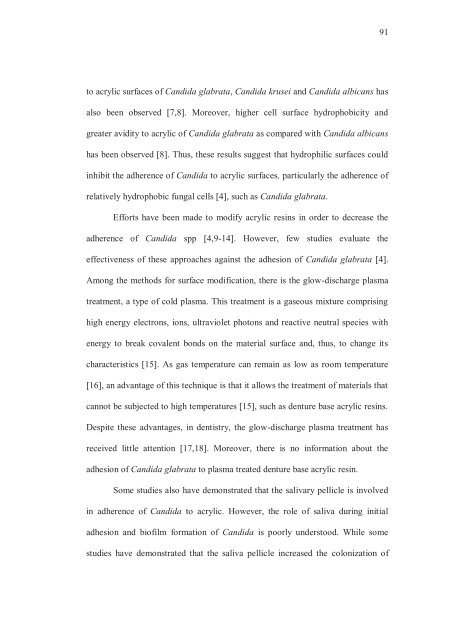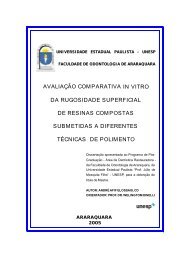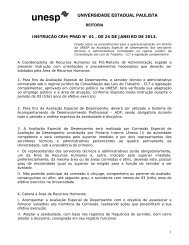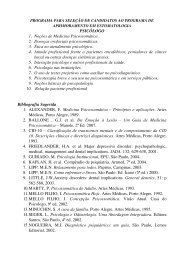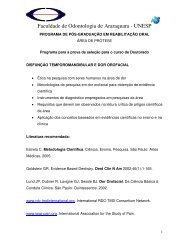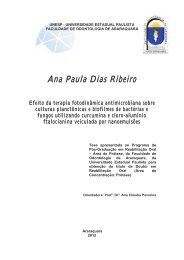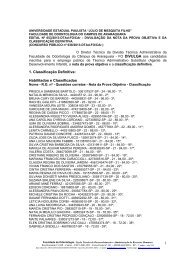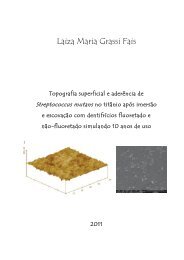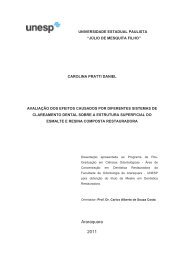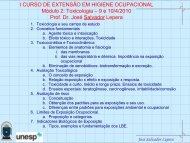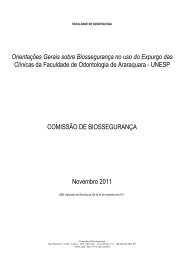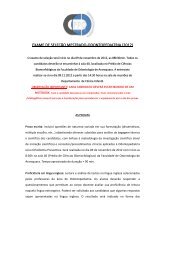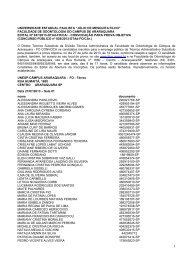universidade de são paulo - Faculdade de Odontologia - Unesp
universidade de são paulo - Faculdade de Odontologia - Unesp
universidade de são paulo - Faculdade de Odontologia - Unesp
You also want an ePaper? Increase the reach of your titles
YUMPU automatically turns print PDFs into web optimized ePapers that Google loves.
91<br />
to acrylic surfaces of Candida glabrata, Candida krusei and Candida albicans has<br />
also been observed [7,8]. Moreover, higher cell surface hydrophobicity and<br />
greater avidity to acrylic of Candida glabrata as compared with Candida albicans<br />
has been observed [8]. Thus, these results suggest that hydrophilic surfaces could<br />
inhibit the adherence of Candida to acrylic surfaces, particularly the adherence of<br />
relatively hydrophobic fungal cells [4], such as Candida glabrata.<br />
Efforts have been ma<strong>de</strong> to modify acrylic resins in or<strong>de</strong>r to <strong>de</strong>crease the<br />
adherence of Candida spp [4,9-14]. However, few studies evaluate the<br />
effectiveness of these approaches against the adhesion of Candida glabrata [4].<br />
Among the methods for surface modification, there is the glow-discharge plasma<br />
treatment, a type of cold plasma. This treatment is a gaseous mixture comprising<br />
high energy electrons, ions, ultraviolet photons and reactive neutral species with<br />
energy to break covalent bonds on the material surface and, thus, to change its<br />
characteristics [15]. As gas temperature can remain as low as room temperature<br />
[16], an advantage of this technique is that it allows the treatment of materials that<br />
cannot be subjected to high temperatures [15], such as <strong>de</strong>nture base acrylic resins.<br />
Despite these advantages, in <strong>de</strong>ntistry, the glow-discharge plasma treatment has<br />
received little attention [17,18]. Moreover, there is no information about the<br />
adhesion of Candida glabrata to plasma treated <strong>de</strong>nture base acrylic resin.<br />
Some studies also have <strong>de</strong>monstrated that the salivary pellicle is involved<br />
in adherence of Candida to acrylic. However, the role of saliva during initial<br />
adhesion and biofilm formation of Candida is poorly un<strong>de</strong>rstood. While some<br />
studies have <strong>de</strong>monstrated that the saliva pellicle increased the colonization of


